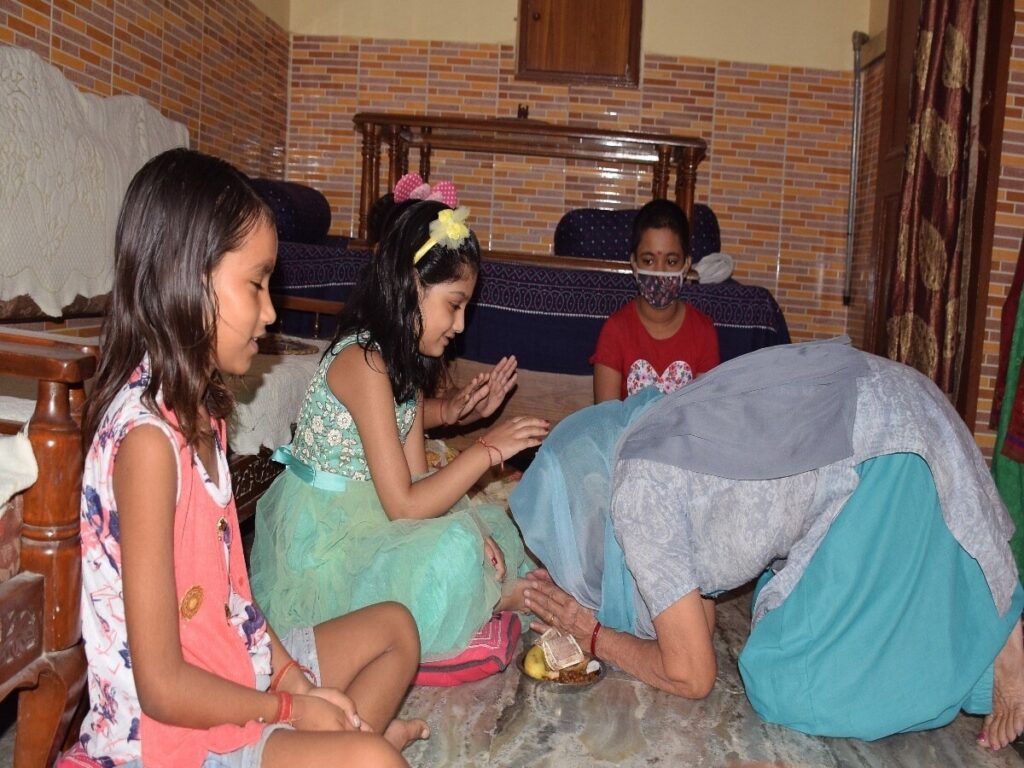Navratri, a significant festival celebrated in India, marks the worship of Goddess Durga and her nine forms. The festival culminates on the eighth and ninth days, known as Ashtami and Navami, respectively. A unique ritual associated with these days is Kumari Puja, where young girls, representing the divine feminine, are revered and worshipped. This article delves into the customs, significance, and festivities surrounding this sacred event.
The Significance of Kumari Puja
Kumari Puja holds immense cultural and spiritual importance during Navratri. The ritual symbolizes the reverence for young girls, embodying purity and divinity. By worshipping them, devotees express their gratitude and devotion to Goddess Durga, acknowledging her presence in these innocent beings. This act fosters respect for womanhood and emphasizes the role of women in society.
Rituals and Preparations
During the Kumari Puja, specific rituals are performed to honor the young girls, usually aged between two to ten years. The preparations involve:
- Selecting the Kumaris: Special care is taken in selecting the girls, often based on their conduct, purity, and family background. In various regions, a specific lineage or community may be considered for performing the puja.
- Worship and Offerings: The selected girls are dressed in traditional attire and adorned with jewelry. Offerings usually include sweets, fruits, and other delicacies that are favorites of Goddess Durga, such as:
| Food Item | Description |
|---|---|
| Sooji Halwa | A sweet dish made from semolina, ghee, and sugar, often garnished with nuts. |
| Puri | Fried unleavened bread, a popular offering during festivals. |
| Chole | Spicy chickpea curry that complements puris perfectly. |
| Fruits | Seasonal fruits are offered as a symbol of purity and freshness. |
Celebrations Across India
The celebrations of Kumari Puja vary across different regions of India. In West Bengal, it is an integral part of the Durga Puja festivities, while in North India, it is an essential part of Navratri celebrations. Various communities might have unique traditions and rituals that add to the diversity of the festival. These local customs enrich the experience and deepen the cultural significance.
The Emotional and Spiritual Aspect
Participating in Kumari Puja is often an emotional experience for families, particularly for those who have their daughters or young girls perform the puja. It reinforces the bond of love, respect, and affection towards the divine feminine. Families usually seek blessings for health, prosperity, and the well-being of their daughters and women in their households.
Conclusion
Kumari Puja during Navratri serves as a beautiful reminder of the respect and honor that should be accorded to women in society. By venerating young girls as embodiments of Goddess Durga, this ritual reinforces the values of purity, strength, and devotion. As we celebrate Navratri, let us embrace the spirit of these traditions and work towards empowering women, ensuring that the reverence for the feminine divine extends beyond rituals into everyday life.
